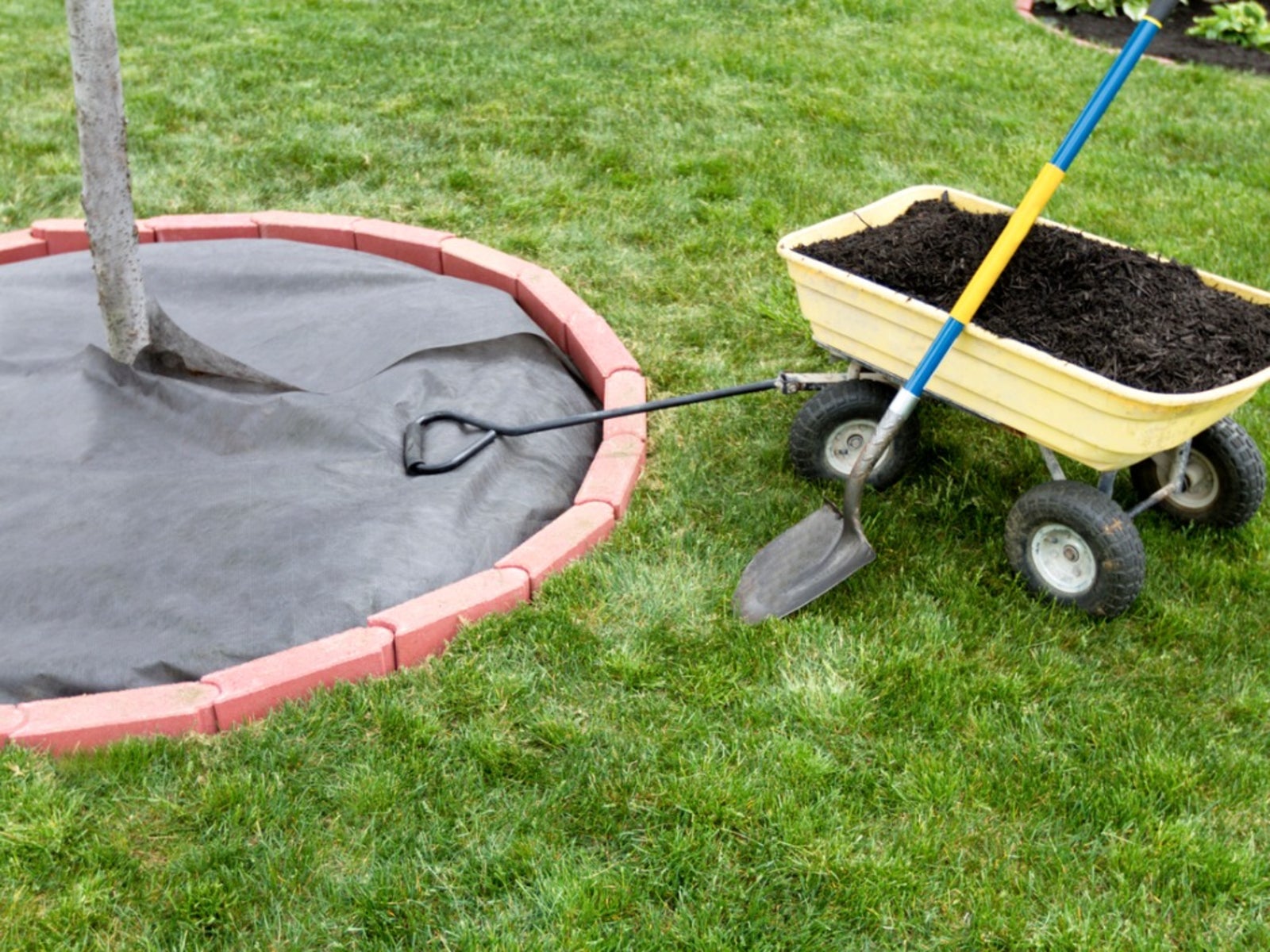What Is A Weed Barrier: Tips On How To Use Weed Barrier In The Garden

What is a weed barrier? Weed barrier cloth is a geotextile composed of polypropylene (or on occasion, polyester) with a meshed texture similar to burlap. These are both types of weed barriers with ‘weed barrier' being a brand name that has come into common use for any garden weed barrier. Let's learn more about how to use weed barrier in the garden.
What is a Weed Barrier?
Attaining popularity in the mid 1980's, garden weed barriers composed of these geotextiles are usually covered with mulch for not only aesthetic reasons but to also hinder the degradation of the fabric weed barrier from the sun and to help maintain consistent moisture beneath the weed barrier cloth. A fabric weed barrier, whether poly propylene or polyester, is a burlap-like fabric that will last a minimum of five years with a weight of at least 3 ounces (85 g.) per square inch (6.5 sq. cm.), water permeable, and 1.5 millimeters thick. This fabric weed barrier is used to reduce the amount of weed infiltration while still allowing water, fertilizer, and oxygen to filter through to the plant, a definite improvement over laying plastic down as garden weed barriers. Fabric weed barrier is also biodegradable and resists deterioration from sun exposure. Weed barrier cloth is found in 300 to 750 foot (91-229 m.) rolls, 4 to 10 feet (1-3 m.) wide for large or commercial planting, which are laid mechanically or in more manageable squares of 4 by 4 feet (1 x 1 m.), which can be secured with wire pins.
How to Use Weed Barrier
The question of how to use a weed barrier is pretty straightforward. First, one must clear the area of weeds where the garden weed barriers will be laid. Usually, the manufacturer's instructions want the fabric laid and then slits cut into it where the plants will be dug in. However, one may also plant the shrubs or other plants first and then lay the fabric over the top, working the slit down over the plant down to the ground. Whichever way you decide to approach the laying of the garden weed barrier, the final step is to lay a 1 to 3 inch (2.5-8 cm.) layer of mulch over the weed barrier cloth to retain moisture, for appearance sake, and assist in retarding weed growth.
Further Information about Garden Weed Barriers
Although fabric weed barrier can be pricey, weed barrier cloth is an excellent choice for controlling invasive weeds, reducing labor time and retaining adequate moisture around plants and trees for five to seven years. Weed barrier cloth is much more effective than traditional methods such as chemical, cultivation, or organic mulch. That said, weed barrier cloth does not completely eliminate the growth of weeds and grass, especially some species of sedge and Bermuda grass. Make sure to eradicate all weeds prior to the laying of the weed barrier cloth and maintain a schedule of weed removal from the surrounding area.
Sign up for the Gardening Know How newsletter today and receive a free copy of our e-book "How to Grow Delicious Tomatoes".

Amy Grant has been gardening for 30 years and writing for 15. A professional chef and caterer, Amy's area of expertise is culinary gardening.
